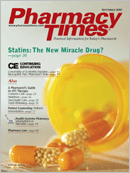Publication
Article
Pharmacy Times
Recycling and Customer Service
When I was driving on campus recently, I observedthe demolition of a cafeteria. Heavy equipmentwas ripping out sections of the building, and Icould see everything being trashed by heavy equipmentbuckets.
If my father had been with me, he would have bellowedabout wastefulness and suggestedthat someone should haveremoved the useful fixtures,shelving, and probably hundredsof light switches andother items before the demolition.Toward the end of his life,he occasionally mused aboutAmerica becoming a "disposablesociety," preferring toscrap the old and start fromscratch, whether it be a buildingor a television set that goeson the blink. My dad's generationcharacterized such a practiceas wasteful, born from aspoiled and impatient new generationthat wants its needsmet immediately.
I thought about recyclingand pharmacy and what Dadmight have said if I had asked him whether recyclingapplied to pharmacy. One's general obsessive-compulsiveurges have applied to recycling for decades, with the implementationof unit-dose packaging to avoid waste. Using theterm euphemistically, however, recycling in pharmacy, or itsabsence, could embody "reengineering" processes androles—resurrecting historical pharmacy practices that wereabandoned in the name of progress, or even "retooling"pharmacists to assume new responsibilities.
Perhaps the most significant contribution that we as pharmacistshave abandoned from the old days is customer service.Decades ago pharmacists knew their patients and wereon a first-name basis with the doctors with whom they collaborated.Undoubtedly, this philosophy was fundamentalto the value we added to the medication-use process. In hospitals,we have come a long way in terms of physician collaboration,but we have still lost our customer focus. Wehave standardized, modernized, automated, and sterilizedso much of what we have historically done—all in the nameof progress, cost-consciousness, and "improvement." It hasbecome far too common to make our customers, whetherpatients or providers, fit into our standardized processes,with little "wiggle room"forrefinement based on individualneeds or preferences.
We as pharmacists need torevisit our customer satisfactionphilosophy and openlydiscuss as team members howwe might restore our customerservice strength. Can't pharmacistsbe able to make exceptionsto "standardization,"based on the situation? One'sfirst reaction might be that, if 1exception is made, we will losecontrol of our ability to serveall. Is that really true, or do wehide behind rules to make ourown lives simpler?
I have often found that, if Itake 1 extra minute to understanda unique need and todetermine whether there is an opportunity to go the extramile, I can resolve most difficult situations. On some ofthese occasions, I can actually do what I was asked about?and I usually improve a relationship when I do. On otheroccasions, I cannot meet an expectation or preference, but Irarely damage a relationship if I try (even unsuccessfully)and am courteous and sensitive to my customer.
I think we can improve customer service without significantlycompromising efficiency. Shouldn't this be the topicof discussion at our upcoming staff meetings?
Mr. McAllister is director of pharmacy at University of NorthCarolina (UNC) Hospitals and Clinics and associate dean forclinical affairs at UNC School of Pharmacy, Chapel Hill.







